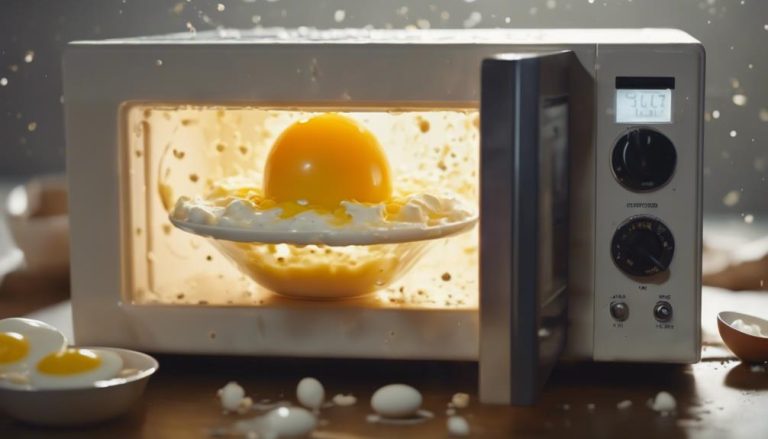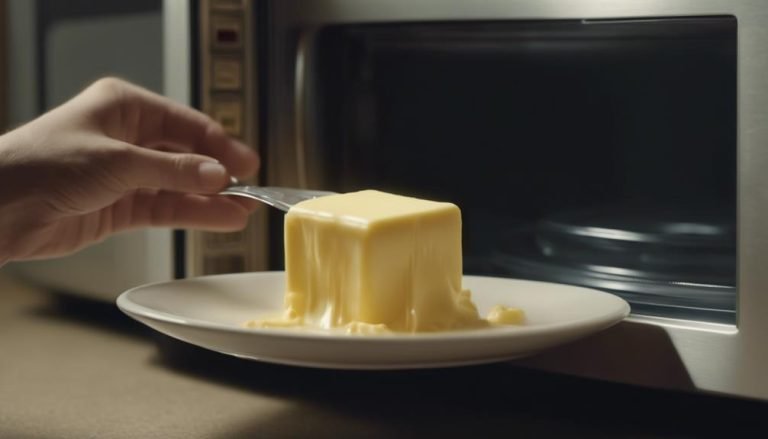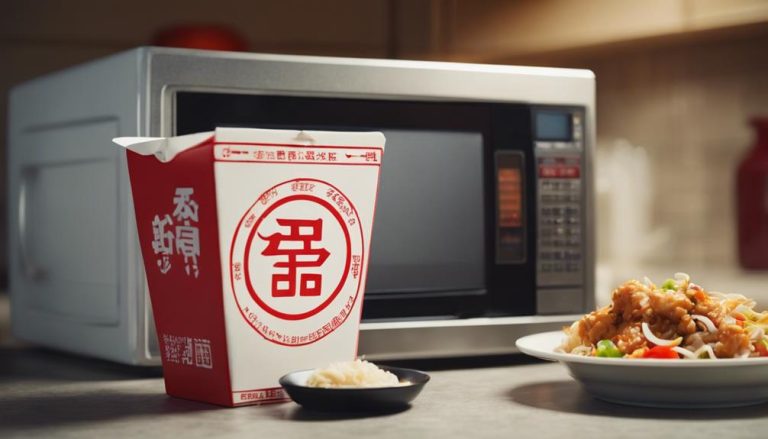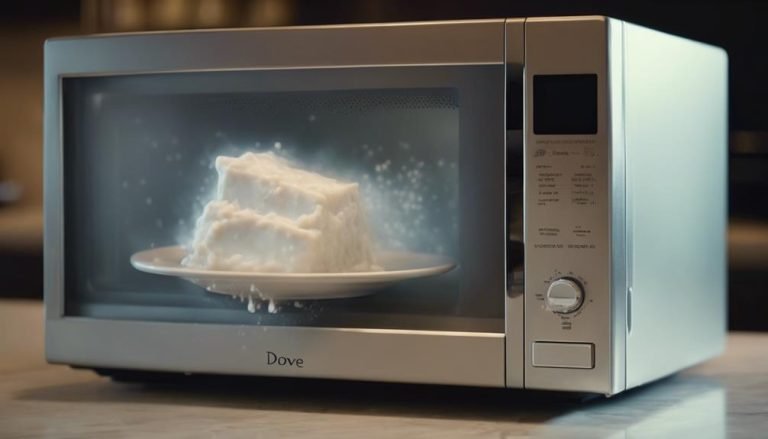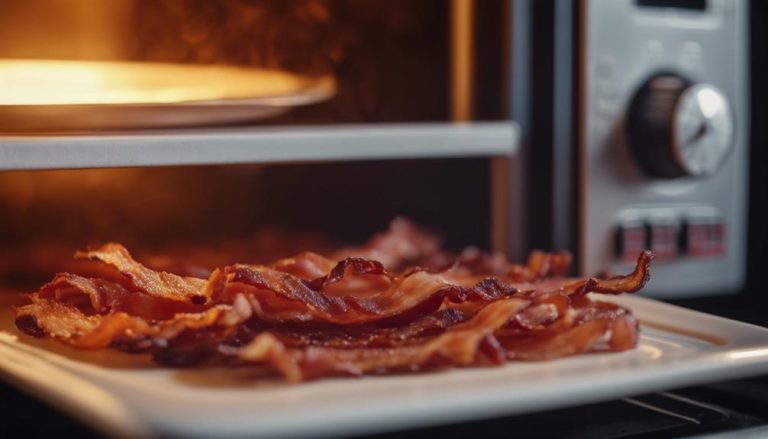Can You Microwave a Paper Cup
Yes, a paper cup can be safely microwaved as long as it is labeled as microwave-safe. However, it is important to note that not all paper cups are microwave-safe, and using a non-microwave-safe paper cup can result in it catching fire or melting.
To ensure safety, always check the packaging or label for microwave-safe instructions before microwaving a paper cup.
Key Takeaways
- Microwaving paper cups poses risks like loss of shape, heat seepage, and exposure to harmful chemicals.
- Structural changes in paper cups can lead to weakening, deformation, and accidents if microwaved.
- Risks include discomfort from heat, spills from unfolded cups, and hazards like odors and smoke.
- To microwave safely, consider alternative containers, high-temperature resistant cups, and follow recommended heating practices.
Safety of Microwaving Paper Cups
Microwaving paper cups presents safety risks due to potential loss of shape, heat seepage, unfolding, and exposure to harmful chemicals from cup coatings when heated. Paper cups are not designed for microwave use, and the heat generated can cause the cup to lose its structural integrity, risking spills and burns.
Furthermore, the glue that holds the cup together may melt, leading to unfolding and potential leakage of hot contents. The coatings on paper cups, often containing chemicals for waterproofing or insulation, can leach into beverages when exposed to heat, posing health hazards.
To mitigate these dangers, it is advisable to transfer liquids to microwave-safe containers before heating to ensure safety when using paper cups in the microwave.
Potential Risks and Concerns
When considering the utilization of paper cups in microwave ovens, it is crucial to acknowledge the potential risks and concerns associated with this practice. Microwaving paper cups can result in loss of shape, compromised structural integrity, and discomfort due to heat seepage.
Safety concerns include unfolded cups leading to spills, burns, and possible health risks from overheating. Additionally, paper cups may emit odors, smoke, crumble, and pose safety hazards when subjected to microwave heat.
To mitigate these risks, it is advisable to transfer contents to a microwave-safe mug and avoid microwaving non-microwave-safe paper cups. Handling challenges may arise from hot cups, deformed shapes requiring extra care, and dangers posed by melted glue causing cups to unfold unexpectedly.
Effects on Paper Cup Integrity
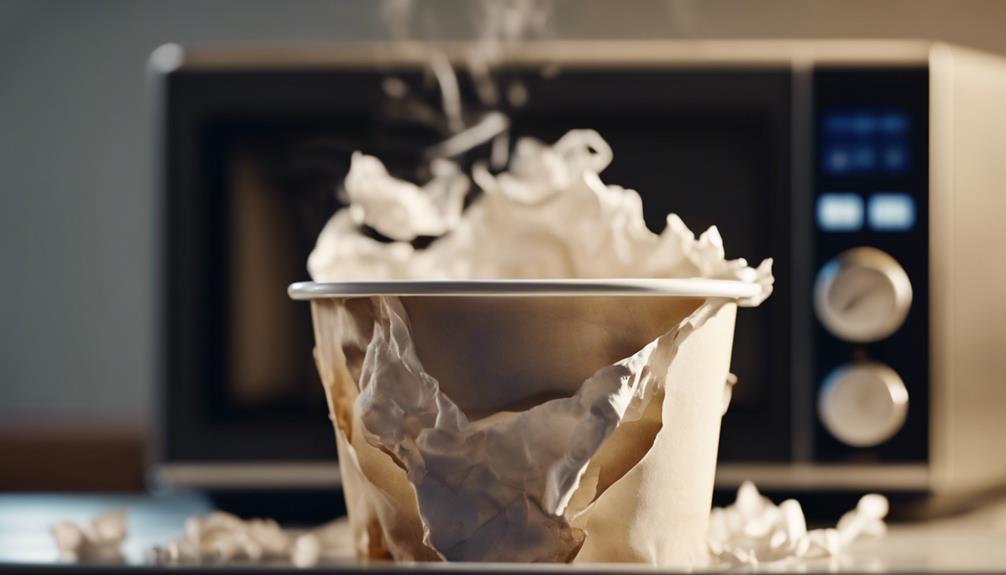
Microwaving a paper cup can lead to significant changes in its structure and integrity, potentially compromising its ability to hold liquids safely. The heat generated during microwaving can weaken the cup's walls, making it prone to deformation and spillage risks.
Addressing these effects is crucial to prevent accidents, burns, and maintain user safety when using paper cups in microwave settings.
Microwaving Paper Cup
Exposing a paper cup to microwave radiation can result in significant alterations to its shape and structural integrity. When microwaving paper cups, the heat generated can transfer through the cup walls, causing discomfort while handling.
This heat can also unfold the cup, potentially leading to spillage, burns, and safety risks. Moreover, excessive heat may cause the paper cup to burn, emit odors, and even produce smoke, posing further hazards.
In some cases, the cup may crumble due to overheating, resulting in a messy outcome. Therefore, it is essential to exercise caution when placing paper cups in the microwave to avoid these potential issues and maintain safety during use.
Structural Changes in Cup
After being subjected to microwave radiation, a paper cup undergoes significant alterations that compromise its shape and structural integrity. When possible to microwave, the paper cup may lose its original form, unfolding and potentially causing spillage, leading to safety risks.
The excessive heat generated during microwaving can also result in uncomfortable handling due to seepage through the cup walls, making it challenging to hold. Moreover, overheating can cause the cup to crumble, creating a messy situation.
Handling challenges arise as unfolded cups compromise structural integrity, increasing the risk of burns. Therefore, microwaving a paper cup can have adverse effects on its overall stability and usability, necessitating caution when considering this method.
Safety Concerns Addressed
The structural integrity of a paper cup can be compromised when subjected to microwave radiation, leading to potential safety concerns and usability issues.
- Heat exposure risks: Excessive heat can lead to burning, odors, smoke, and cup deformation.
- Safety protocols: Microwaving paper cups can cause spills, burns, and safety hazards due to cup unfolding.
- Structural integrity concerns: Loss of shape and handling difficulties can result from microwaving paper cups.
- Handling challenges: Deformed cups can be uncomfortable to hold, and there is a risk of burns from hot cups.
Tips for Microwaving Paper Cups
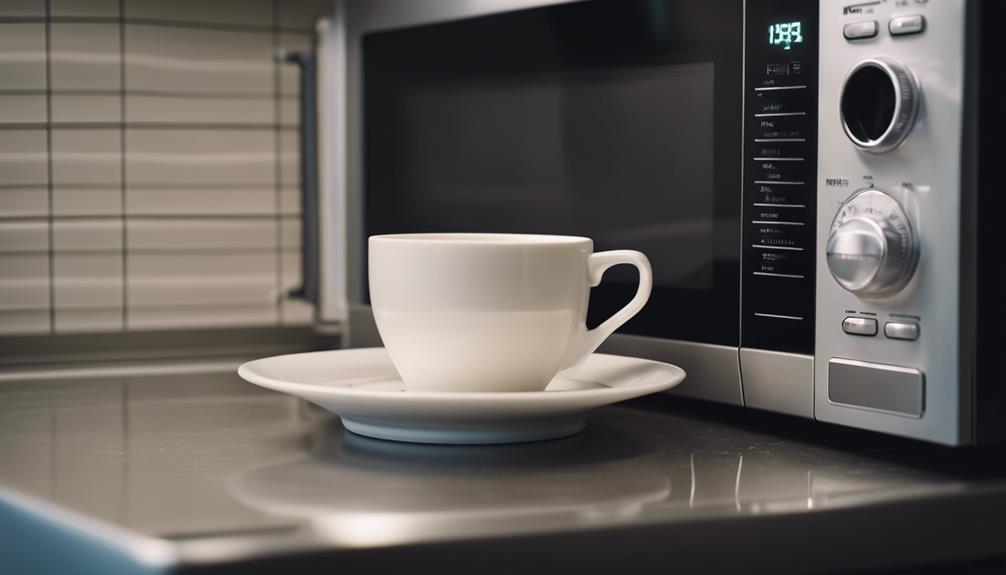
When microwaving paper cups, prioritize safety by checking for microwave-safe labeling and avoiding cups with metallic embellishments.
Proper handling techniques, such as using lower power settings and allowing the cup to cool before touching, can help prevent accidents.
Understanding the potential risks involved and considering alternatives like transferring contents to a microwave-safe mug can further enhance safety measures.
Safety Precautions for Microwaving
When microwaving paper cups, it is essential to prioritize safety by checking for microwave-safe labeling and avoiding cups with metallic elements that could create hazards. To ensure a safe microwaving experience, consider the following safety precautions:
- Heating techniques: Use lower power settings and shorter heating times to prevent overheating.
- Safety measures: Check for microwave-safe labeling and avoid cups with metallic accents to prevent sparks and fires.
- Handling precautions: Allow the paper cup to cool before handling to avoid burns or deformation.
- Safety alternatives: Consider transferring the contents to a microwave-safe mug for a safer heating option.
Proper Handling Techniques
Implementing appropriate handling techniques is crucial when microwaving paper cups to ensure a safe and efficient heating process. It is essential to follow proper disposal methods to minimize the environmental impact of paper cup usage. Recycling options should be explored whenever possible to contribute to sustainability efforts.
| Proper Disposal | Environmental Impact | Recycling Options |
|---|---|---|
| Dispose in bins designated for paper waste | Reduces unnecessary waste in landfills | Look for recycling facilities that accept paper cups |
| Avoid littering or improper disposal methods | Helps in conserving natural resources | Rinse and clean paper cups before recycling |
| Consider composting paper cups if applicable | Decreases pollution and energy consumption | Check with local recycling programs for guidelines |
| Educate others on responsible disposal practices | Promotes eco-friendly habits | Support companies that use recycled paper in their products |
| Encourage reusing paper cups when possible | Contributes to a greener environment | Opt for digital or reusable alternatives when feasible |
Potential Risks Involved
Microwaving paper cups poses potential risks that can affect their structural integrity and lead to safety hazards. When considering microwaving paper cups, be aware of the following risks:
- Heat seepage and structural changes: Microwaving can cause the cup to lose its shape and integrity, leading to heat seepage through the cup walls.
- Cup unfolding and discomfort: There is a risk of the cup unfolding during heating, which can cause discomfort when handling the hot cup.
- Handling challenges and safety risks: Deformed cups, discomfort when hot, unfolding due to melted glue, and potential burns from spillage are all safety risks associated with microwaving paper cups.
Considerations for Heating Liquids
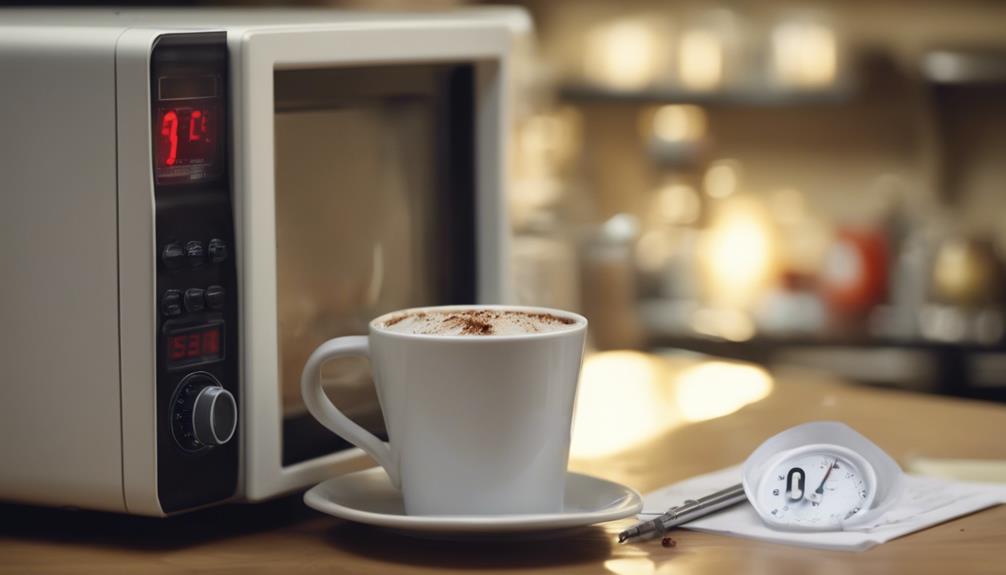
Heating liquids in paper cups requires careful attention to the type of coatings used to ensure safety and prevent potential health risks. When considering heating capacity, liquid seepage, and coating integrity, it's crucial to understand the limitations and risks involved. Here is a breakdown of key considerations:
| Consideration | Importance |
|---|---|
| Heating Capacity | Ensure cup can withstand microwave heat levels. |
| Liquid Seepage | Check for any leaks or seepage after heating. |
| Coating Integrity | Verify the coating remains intact to prevent chemical leaching. |
Alternative Microwave-Safe Containers
When selecting containers for microwave use, consider opting for alternative microwave-safe options like ceramic or glass mugs, silicone containers, stainless steel travel mugs, or heat-resistant plastic containers labeled for microwave use. These containers offer safe and convenient ways to heat beverages without risking damage to the container or compromising food safety.
Here are some suitable alternatives for microwave-safe containers:
- Glass containers, Silicone options
- Stainless steel mugs, Heat resistant plastics
- Ceramic mugs, Safety precautions
Summary and Recommendations

Considering the potential risks and limitations associated with microwaving paper cups, it is essential to explore safer alternatives and adopt recommended practices for optimal food and beverage heating experiences.
Heating methods analysis reveals that microwaving can compromise the structural integrity of paper cups, leading to discomfort from heat seepage. Safety precautions should be taken to avoid cups unfolding, potential burns, and material emissions when overheated.
Microwave alternatives such as microwave-friendly paper cups with high-temperature resistance can be considered. However, handling challenges like increased effort, discomfort, potential spills, and safety risks from melted glue and unfolding cups should not be overlooked.
To ensure a safe and effective heating process, transferring contents to microwave-safe mugs and avoiding non-microwave-safe paper cups is advised.
Frequently Asked Questions
Can Microwaving a Paper Cup Cause It to Catch on Fire?
Fire safety is crucial when microwaving paper cups due to the combustion risk. Microwaving non-microwave-safe paper cups can ignite them, leading to fire hazards. Always prioritize microwave precautions by using appropriate containers to prevent potential incidents.
Is It Safe to Microwave a Paper Cup With Food Inside?
When considering safety concerns, microwaving a paper cup with food inside may pose risks due to potential cup deformation and chemical transfer. To mitigate these issues and reduce environmental impact, transferring food to a microwave-safe container is recommended.
Are There Any Health Risks Associated With Microwaving Paper Cups?
Paper cup composition can contain plastics that pose health risks when microwaved. The environmental impact of heating paper cups includes chemical transfer. To reduce risks, consider alternative heating methods like transferring contents to a microwave-safe mug for safer use.
Can Microwaving a Paper Cup Affect the Taste of the Liquid Inside?
Microwaving a paper cup can compromise taste quality by inducing chemical leaching from the cup's coating. This alteration is due to the heat causing the coating to melt, potentially affecting the liquid's flavor profile. Opting for microwave-safe containers can retain taste integrity.
Is It Okay to Reuse a Paper Cup That Has Been Microwaved Multiple Times?
Reusing paper cups, especially those microwaved multiple times, poses risks to safety and health due to potential structural weaknesses and chemical leaching. Considering environmental impact, exploring alternatives like reusable cups is advisable for sustainability.
Conclusion
In conclusion, microwaving a paper cup poses safety risks and can compromise the cup's integrity. It is important to consider alternative heating methods and use microwave-safe containers to avoid potential hazards.
Just as a fragile flower wilts under intense heat, a paper cup can lose its shape and become a safety concern when exposed to high temperatures in the microwave. It is crucial to prioritize safety and proper heating techniques when handling paper cups.

